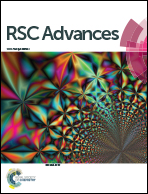Evaluation of total antioxidant and free radical scavenging activities of Callistemon citrinus (Curtis) Skeels extracts by biochemical and electron paramagnetic resonance analyses
Abstract
Plants are known to contain a variety of compounds exhibiting antioxidant and free radical scavenging activities. The present study focuses on the preparation of crude extracts from Callistemon citrinus (CC) plant leaf using different solvents (such as ethanol, methanol and n-hexane), to assess their antioxidant and free radical scavenging ability. The extracts of ethanol (EE), methanol (ME) and n-hexane (HE) were used separately to measure their individual free radical quenching efficiency against 1,1-diphenyl-2-picrylhydrazyl (DPPH), ABTS˙+, superoxide (O2˙−), hydroxyl (HO˙), nitric oxide (NO˙) and hydrogen peroxide (H2O2). The reducing power as well as the phenolic and flavonoid contents of the extract was also assayed. Concentration and time dependent HO˙ radical scavenging potentials of these extracts were monitored by Electron Paramagnetic Resonance (EPR) spectroscopy. The results of all these studies suggested that the EE had highest free radical scavenging property followed by ME and HE. This activity increased with increase in extract concentration in situ. The observed potential antioxidant and free radical scavenging activities of the EE of CC leaves could be used for therapeutic purpose in the treatment of oxidative stress induced disorders.


 Please wait while we load your content...
Please wait while we load your content...